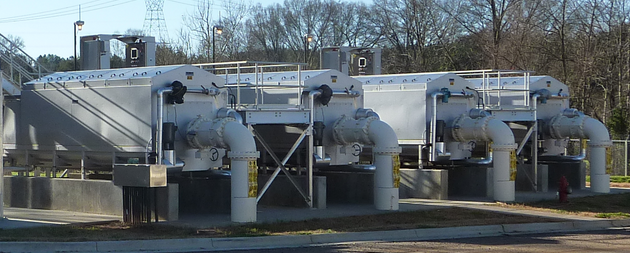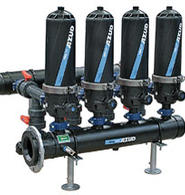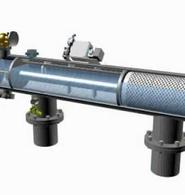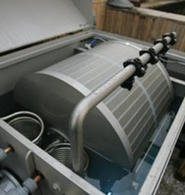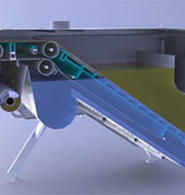Gravity filters for water treatment
The unit consists of rotating filter discs fixed to a horizontal hollow shaft and 60% immersed in water. Each disc consists of interchangeable segments of a stainless steel sieve. On either side of the disc segments, a thin polyester or stainless steel mesh is stretched on the drum (based on the version).
The water supplied for treatment is fed by gravity along the hollow shaft to the inside of the discs and filtered through the disc screen outward to the tank of the unit. Suspended substances are deposited on the surface of the screen by gravity. The treated filtrate is removed from the tank through the spillway from the end of the unit. During filtering, the disc filters remain stationary. As the mesh becomes contaminated, the hydraulic resistance increases and a difference in fluid levels occurs on both sides of the mesh. When a certain level difference is reached, the automation starts and the discs start to rotate. When the discs rotate, the suspended substances stuck to the mesh from the inside are removed from water.
During the rotation, the filters are washed from the outside with water supplied under pressure from sprinkler pads with injectors located vertically above the water between the discs. Water is supplied onto the mesh outside at a pressure of 7 bar. The suspended substances on the mesh are drained downward and fall into the trough located inside the central hollow shaft. The withdrawal of the filtered slurry from the unit is carried out by gravity.
For washing, a cleaned filtrate (3-5% of the total flow rate) is pumped back to the injectors with a pump. During the washing of the filters, the filtration process continues.
The modular design of the unit, as well as the extensive filtering surface of the disc filters ensures the unit capacity equal to 1500 m3/h. During microfiltration, suspended and organic substances are retained on the disc filter, the BOD/COD values significantly decrease.
Advantages:
- microfiltration by gravity with very high suspended matter retention efficiency;
- high filter surface area with small installation space;
- no need for additional water supply for flushing;
- significant reduction in phosphate content (using flocculants);
- optimum adaptation to existing concrete or stainless steel tanks;
- the possibility of installing additional discs to increase throughput;
- compact overall dimensions;
- completely enclosed casing;
- continuous operation mode.




